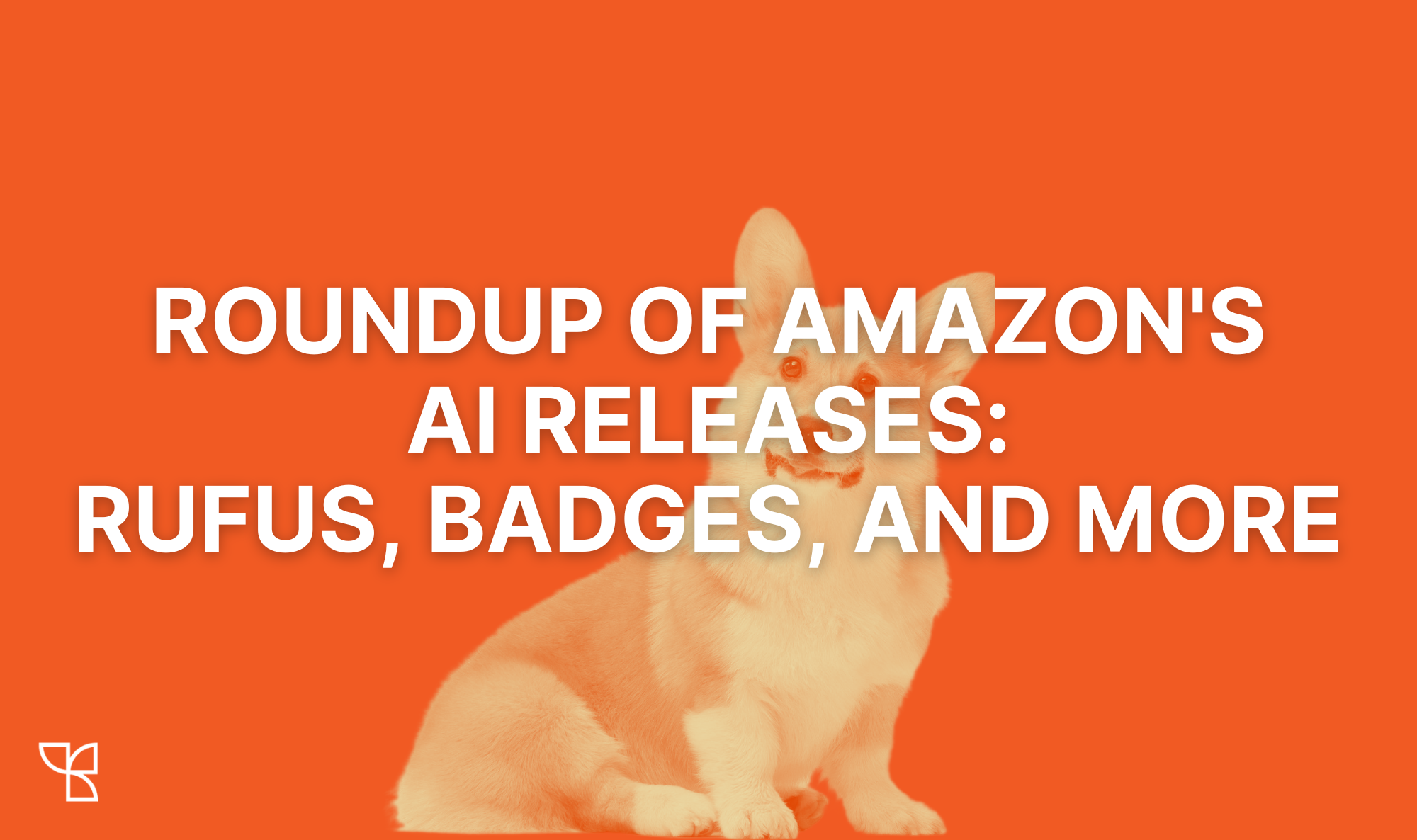
While we were at Prosper Show, one of the themes we kept hearing throughout the conference was about Amazon’s latest AI releases—like Rufus, badges, and listing builder.
AI isn’t new to Amazon; they’ve already implemented AI through features like review summaries. But as they continue to expand its presence across the site, sellers need to be aware of what Amazon’s AI is doing, and how they can optimize for it.
This is especially important as Amazon is taking the liberty of making changes to sellers’ listings in many different ways, presumably in order to benefit conversion rates. As sellers, you need to be aware of the changes Amazon is making, so you can have control over your listings.
Let’s dive into some recent examples of AI Amazon has implemented, and how your brand can optimize for them to ensure your sales aren’t negatively affected.
Examples of Amazon’s AI
Amazon-Provided Discounts on 3P Items
Sometimes, Amazon might provide a discount for your products without your knowledge or approval. This would appear as “Amazon-Funded Discount,” where Amazon (not the brand owner) is paying for the discount. Many brands love this feature, because it can drive more sales over the discount period.
But if you are a brand that sells to other retailers or is in distribution with strict MAP policies, this “discount provided by Amazon” can cause issues unless you manually un-enroll from the program. Note that unenrolling from this program means Amazon will not fund discounts for any item in your catalog – the setting is account-wide, not ASIN-specific.
Listing Content Changes
We’ve written about this previously, but Amazon has been using AI to change sellers’ listing content, either by making permanent Title updates, or by changing the experience on a user level, like hiding the bullet points or reorganizing parts of the listing. These updates could result in inaccurate product information or a decrease in conversions.
Frequently-Returned Item Badges
Amazon has started placing badges on listings that have high return rates. This badge is determined by how often your item is returned compared to similar items on Amazon. From a consumer perspective, this badge can be helpful in determining whether or not the item is worth purchasing, but for sellers it can mean fewer sales.
If you’re impacted by the frequently-returned item badge, the only way to get rid of it is to improve your return rates. Kapoq helps you keep track of returns over time so you can identify short and long-term trends in your return rates, and adapt accordingly.
Rufus
Another recent Amazon AI development is Rufus, a generative AI that assists sellers in writing product detail page content. Many sellers have used this feature to save time in writing product descriptions, bullet points, and listing content.
Rufus has also expanded to be available on the consumer side, where Rufus serves as a shopping assistant that customers can ask specific questions about specific products, like “are these shoes good for trail running?” But Rufus can also help customers answer more general shopping questions, like “what should I buy for a pool party?” or “what should I consider when buying a treadmill?”
Rufus might be an indicator of Amazon’s long term vision to get away from purely SEO-driven organic rank shopping behaviors on the marketplace, and instead move towards using AI to help shoppers find products they’ll love.
How to Optimize for Amazon’s AI
Monitor Content Changes
Since Amazon is making changes to product listings without requiring sellers’ knowledge or approval, it’s important to be aware of how your content is being altered as a seller. Kapoq’s content module alerts you when changes have been made to your content, and also allows you to revert your listings to your baseline content (which you can adjust at any time).
Optimize for AI Search
Optimizing for AI is drastically different from the typical strategies for SEO on Amazon, which sellers and agencies have been using for years to drive visibility.
Since Amazon has released Rufus for both seller use (in writing product descriptions) and customer use (in finding products), it’s easy to make the connection that sellers who use Rufus could find more success in customers finding their products with Rufus, as the content would already be optimized for AI search.
When using Rufus to generate descriptions, you can choose to use the content as-is, or make edits to it yourself. There could be potential in seeing how Rufus’s suggested content differs from your baseline content, and testing to see if using Rufus’s updates results in more sales.
Never miss a change to your content with Kapoq’s product alerts. Get your free demo today.







